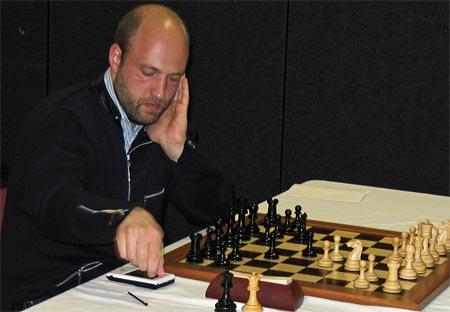
The Best Moves Never Played: Key Positions - Part 3
Generally speaking there are two types of chess players: optimists and pessimists. The first tend to stay positive and evaluate positions in their favor, while those in the latter category often give the opponent too much credit and underestimate their positions. Optimists run a danger of missing the opponent's chances and generally overevaluating their positions. On the other hand, pessimists lack faith, and therefore confidence. In my view it is better to be in the first category. I have witnessed strong GMs saying: "I was completely winning" and then checking with the engine I discovered that they only had a small plus. Typically, you wouldn't see super-GMs misevaluating the position that badly but all other players definitely do so.
Today's example fits our theme perfectly, and our protagonist is GM Shabalov - who is by no means an optimist. In the course of this last-round decisive game he played for a win in an already equal position, declining a drawish continuation, then ended up in a pawn-down endgame, which he miraculously won. And his opponent was the very strong 2637 fide-rated GM Erenburg. Miracles happen but I believe that a person with courage to play any type of position for a win will collect more points than someone who fights for a win only in better positions.
The opening was some kind of Slav where the queens went off the board on move 10; however, this fact did not prevent the players from creating a game with many deep and interesting ideas. These are the moves leading up to the first key position:
White's last move Ne5 is ambitious - it is a piece sacrifice, though only temporary as black is obliged to give back the bishop. White wanted more than a draw (which could have been achieved after 18. R1d4), because he thought that his position was better: the only open file is in his hands, the bishop from g2 attacks the b7 weakness and the knight on e5 is a powerful threat to the black king. However, black is up a pawn - this is a harsh reality. His weaknesses are all along the 7th-rank, so if he manages to cover it, white will need to go a long way to prove that he has enough compensation. Erenburg cold-bloodedly defended the 7th-rank and traded a few pieces in the following sequence:
The above sequence is not forced and both sides could have played better, but we will not concentrate on it because black managed to preserve the initial advantage and it seems that it should be enough for a win.
Here a pessimist playing white would see that the a and b pawns are connected passed pawns, but Shabalov in the postmortem saw them as pawns that cannot advance because either the white knight from c5 or the bishop from c8 would stop them. He also saw h7 as a weakness and perceived the creation of a passed g-pawn.
We've reached another critical position. Black still has two passed pawns on the queenside, so he should still be winning, right? Try to figure out which move is better for white: h4 or Bxc6

We know from the basics of chess endgames that when having pawns on both flanks it is the bishop who is better than the knight. Therefore, the bishop exchange for the knight does not make much sense from this point of view. On the other hand, we get the d-pawn and the white king is positioned well to stop the a and b passed pawns. There are a few critical positions in the calculation process that one had to identify and evaluate. Surely, in time-trouble the players over the board couldn't do it but in the quiet of postgame analysis it is possible.
Critical Position #1: White is winning regardless of whose move it is.

The winning mechanism: white will wait by playing Ka4-Kb3, the black king will have to move to the back rank and then white can advance the e and then the f-pawn and eventually queen.
Critical Position #2: White is winning regardless of whose move it is.

The black king cannot stop the e- and g-pawns, while the white king can stop the a and b-pawns easily.
Shabalov did not choose the right continuation. The following analysis includes the winning lines.
After the incorrect 37. h4, black has three logical continuations: a4, b4 or Ne7. One wins, one loses, and one is a draw. Would you find the right one?
It is hard to believe that the difference between the a4 and b4 moves is a whole point. When deciding for which continuation one should go for one should see the following key idea and evaluate it properly.
Critical Position #3: White to move and Black is winning.

The idea is that with the king on b5, white no longer has Kc4 to stop the a-pawn in time.
Just to mention that Ne7 would lead to a balanced endgame. Erenburg did not choose the right continuation and Shabalov won the game.
This is the story of one dramatic game, where key positions were hard to spot and evaluate properly. Now that we are done with this game we can move on to studying the classics next week.






